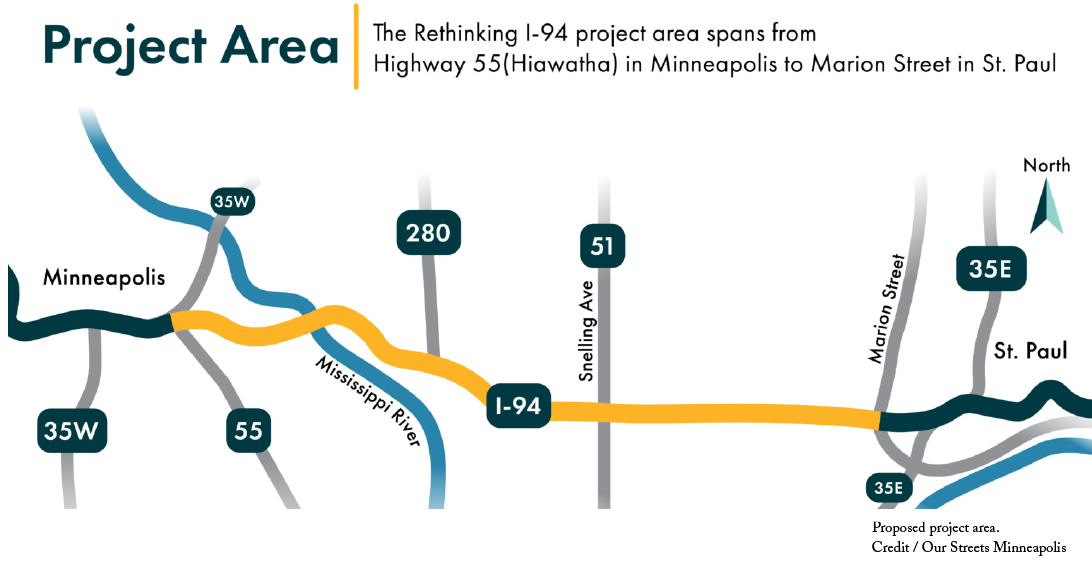History and Context
Planned and built in the 1960’s, I-94 tore through the fabric of Minneapolis and Saint Paul neighborhoods. Thousands of homes and small businesses were bulldozed to make way for a massive, football-field-wide freeway trench, creating scars across the city landscape. This devastation disproportionately impacted communities of color. Eighty percent of Minneapolis Black residents lived in the neighborhoods where I-94, 35W and Highway 55 were routed. In Saint Paul, 6,000 people and hundreds of businesses were displaced by I-94, the majority of which were located in the Rondo neighborhood, home to eighty percent of the City’s Black residents at the time.
The highway continues to divide communities along the corridor and is a major contributor to pollution. Air pollution along the corridor is nearly three times worse than what is deemed unhealthy by the Minnesota Pollution Control Agency (MPCA.) Ninety-four percent of the project corridor has been identified by the MPCA as “an area of concern for environmental justice.”
Proposal
Now, I-94’s pavement, bridges and retaining walls are nearing the end of their useful life and the segment between downtown Minneapolis and Saint Paul is due to be reconstructed. MnDOT has created the “Rethinking I-94 project” to determine the future of this corridor. This project is a once-in-a-lifetime opportunity to repair the highway’s historic and ongoing harms and reimagine the corridor to prioritize the health and well-being of the tens of thousands of people who live, work, and go to school near it.
The Twin Cities Boulevard, supported by Our Streets Minneapolis, is a growing community vision to replace the 7.5-mile section of I-94 that makes up the Rethinking I-94 project corridor with a multimodal boulevard, return the surrounding land to neighborhoods and fulfill calls for reparative justice along the corridor. The Twin Cities Boulevard would fill in the I-94 trench and replace it with an at-grade, multi-modal boulevard, including rapid transit, bikeways, linear parks, and reclaimed land for community guided housing and business development. The vision includes a robust set of policies and community benchmarks focused on housing, anti-displacement, community stewardship, and equitable investment with the aim of ensuring that the benefits of highway removal are prioritized for existing residents and those who have been disproportionately impacted.

Current Plans
Since launching in February 2022, the campaign has successfully petitioned MnDOT to issue a statement acknowledging the harms of I-94 and committing to including a highway to boulevard option in the upcoming project alternatives. Our Streets Minneapolis is advocating for state funding to go towards a feasibility study of a highway to boulevard conversion on Interstate 94. This study would help understand the climate, traffic and economic impacts on Rondo and other Minneapolis and St. Paul communities along the project corridor.
Reconnect Rondo, an organization focused on a smaller portion of the impacted community in St. Paul has received $2 million from USDOT's Reconnecting Communities Pilot Program grants to study the planning and development of an African American Cultural Enterprise District and associated Land Bridge to restore and reconnect the Rondo neighborhood.



















